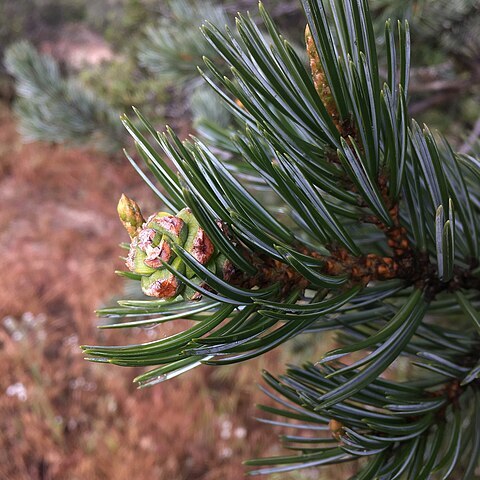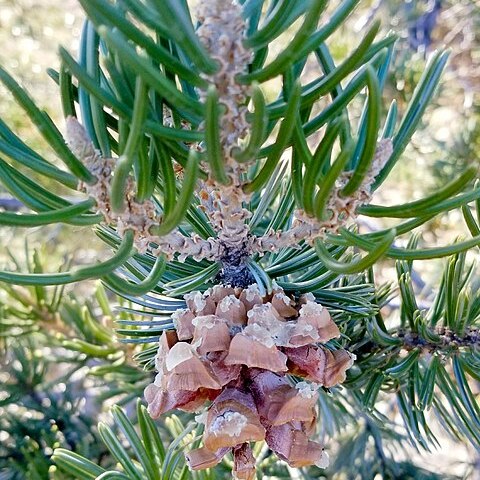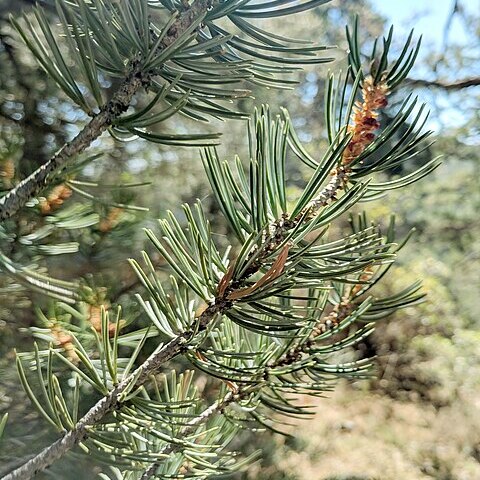A small tree. It grows 8-15 m tall. The trunk can be 40 cm across. The bark is thick and rough. The leaves or needles are in groups of 4-5. They are 3-5 cm long and dark green and shiny. The cones open to 5-7 cm across and have seeds attached to the scales. The seeds are 10-14 mm long and have a thin shell.




